japanese beetle life cycle iowa
Feeding on grass roots Japanese beetle grubs damage lawns golf courses and pastures. When these conditions are met Japanese beetles emerge from their winter hiding spots in early- to mid-summer.
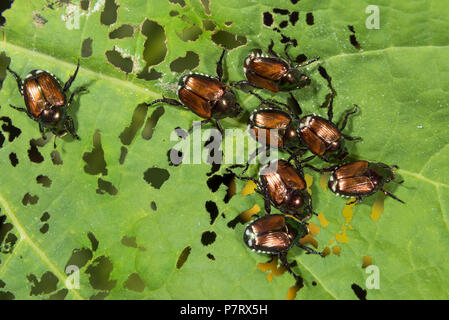
Japanese Beetles Popillia Japonica Eating A Physalis Leaf Iowa Usa Stock Photo Alamy
The adults mate and females lay their eggs in the soil in grassy areas.

. Mature larvae feed on the roots of host plants causing severe damage over time while adults skeletonize leaves in groups as well as any fruit that may have grown. These grubs will begin to eat the roots of plants and overwinter as a grub. In the summer around June or July full-grown beetles will lay eggs.
As this insect moves into other areas its important to understand their life cycle the damage they cause and options for managing them. The immature larvae or grubs stay close to the soils surface and feed on grass roots. Adult beetles generally start feeding on leaves growing on the top of the infected plant which is a sign of a Japanese beetle infestation.
The grubs are C-shaped and approximately 125 inches when fully grown. The most susceptible life stage of the Japanese beetle is the newly hatched grub in the soil. Life Cycle Japanese beetles have one generation per year in Iowa Fig.
Life cycle of Japanese beetles. The beetles range appears to be increasing. Ad Browse discover thousands of brands.
They overwinter deep in the soil and resurface again in spring when soil temperatures rise to feed for another 3 to 4 weeks before emerging as adult Japanese beetles. During a two- to three-week period female beetles repeatedly tunnel a few inches into the ground and lay up to 60 eggs each. The female beetle can begin laying her eggs within 24 hours of emergence and will continue to do so for several weeks until she has laid up to 60 or 70 eggs.
Scouting should begin in corn in July and August and switch to soybeans during August. 3 Areas of healthy sunny well-irrigated and well-maintained lawn grasses are prime targets. Use percent pollination and presence of uncut silks as a guide when deciding treatment of corn.
The life cycle of the Japanese Beetles consists of four stages of development called complete metamorphosis. Japanese beetle adults attack the foliage flowers or fruits of more than 300 different ornamental and agricultural plants. Japanese beetle eggs hatch during midsummer.
Read customer reviews find best sellers. Japanese beetles go through multiple stages in their life cycle. In Iowa adult beetles emerge in mid-June through July.
The generally accepted range is 30 to 45 days Fleming 1972. The life of adult beetles is relatively short under high temperatures and long under low temperatures Fleming 1972. Stage 1 eggs Stage 2 larva instar I II III Stage 3 pupa chrysalis Stage 4 adults.
These eggs hatch late July into August and are small and close to the soil surface. Shortly after the egg will hatch and give rise to grubs. Life cycle of Japanese beetles.
Look the life cycle of the Japanese beetle is much like the cycle of many other beetles. In the spring around March or April the grub will. The life cycle of Japanese beetles consists of three stages.
Egg larvae and. You can use an organic product called Milky Spore. The grub to take on a characteristic milky appearance.
Milky spore disease can suppress the. Iowa Missouri and Nebraska. Adult female beetles lay eggs in the soil in early June.
Studies with Japanese beetles under captivity have shown variations as wide as nine to 74 days in males and 17 to 105 days in females. Japanese beetles mate and feed in groups. Japanese beetles overwinter in the soil and as soil temperatures warm larvae move closer to the surface and pupate.
This is when they are easiest to control. Trapping is NOT recommended as it has a tendency to attract the beetles. Leaf feeding is rarely significant in corn.
The grubs of these pests will feed on the roots of the grass and can cause them to thin out. Milky spore disease builds up in turf slowly over 2 to 4 years as grubs ingest the spores become infected and die each releasing 12 billion spores back into the soil. The Japanese beetle is a highly destructive plant pest that can be very difficult and expensive to control.

Japanese Beetle Food Preferences Horticulture And Home Pest News
Where Have All The Beetles Gone Homegrown Iowan

Crop Insects To Watch For In June Iowa Agribusiness Network

Japanese Beetles Expanding Range In Iowa Integrated Crop Management
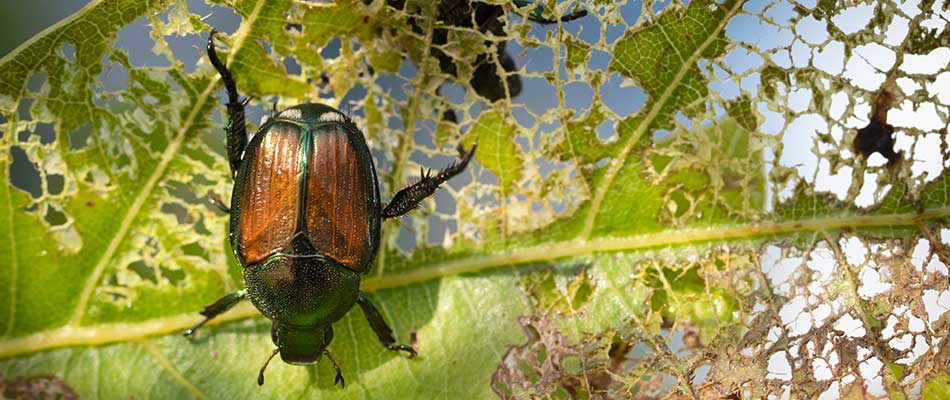
Japanese Beetle Control In Des Moines West Des Moines Ankeny Ia A Lawn Landscape

Japanese Beetles Popillia Japonica Eating A Physalis Leaf Iowa Usa Stock Photo Alamy

Doug S Garden Blog They Re Here Time To Protect Your Plants

Japanese Beetles Begin Emergence Integrated Crop Management

The Japanese Beetle Has Reached Its Peak Population In Places Across Iowa While Some Areas Of The State Have Not Seen The Bee Japanese Beetles Beetle Japanese
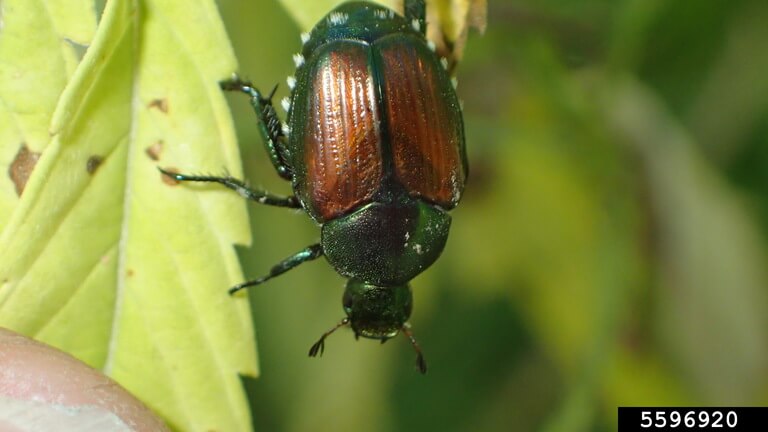
Japanese Beetle Soybean Pest Soybean Research Information Network Srin
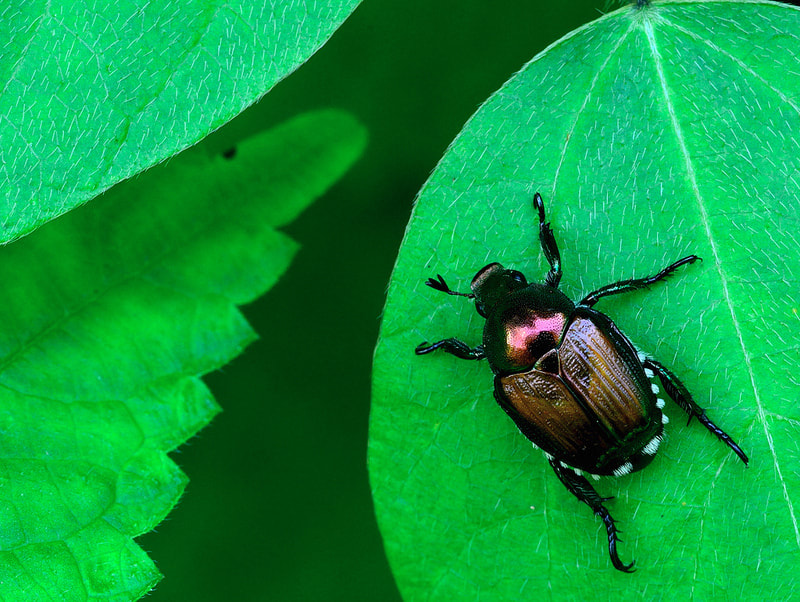
Japanese Beetles The Garden Website Com

How Many Japanese Beetles Will You See This Year Horticulture And Home Pest News

Signs Of Japanese Beetle Infestations Shades Of Green Lawn Landscape

How To Prevent Japanese Beetles Lawn Care Blog Lawn Love
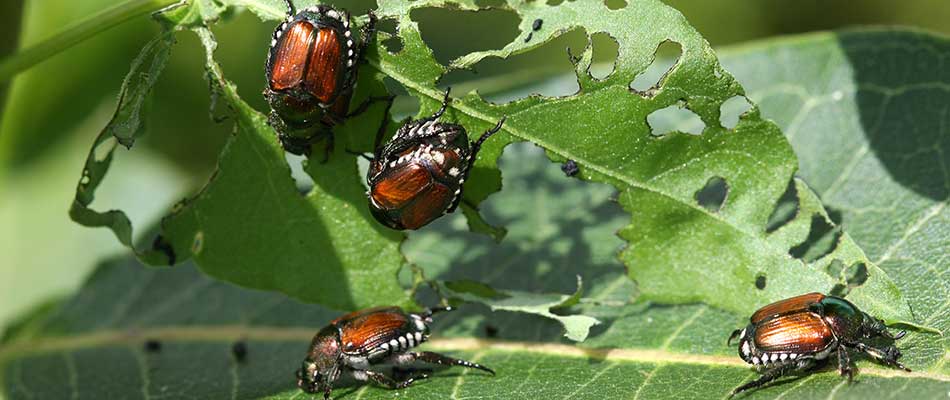
Japanese Beetle Control In Des Moines West Des Moines Ankeny Ia A Lawn Landscape

Is It Japanese Beetle In The Field Or Something Else Integrated Crop Management

Japanese Beetles Emerging In Southern Iowa Integrated Crop Management

Iowa Corn Soybeans Japanese Beetles Emerging In Southern Areas Agfax
